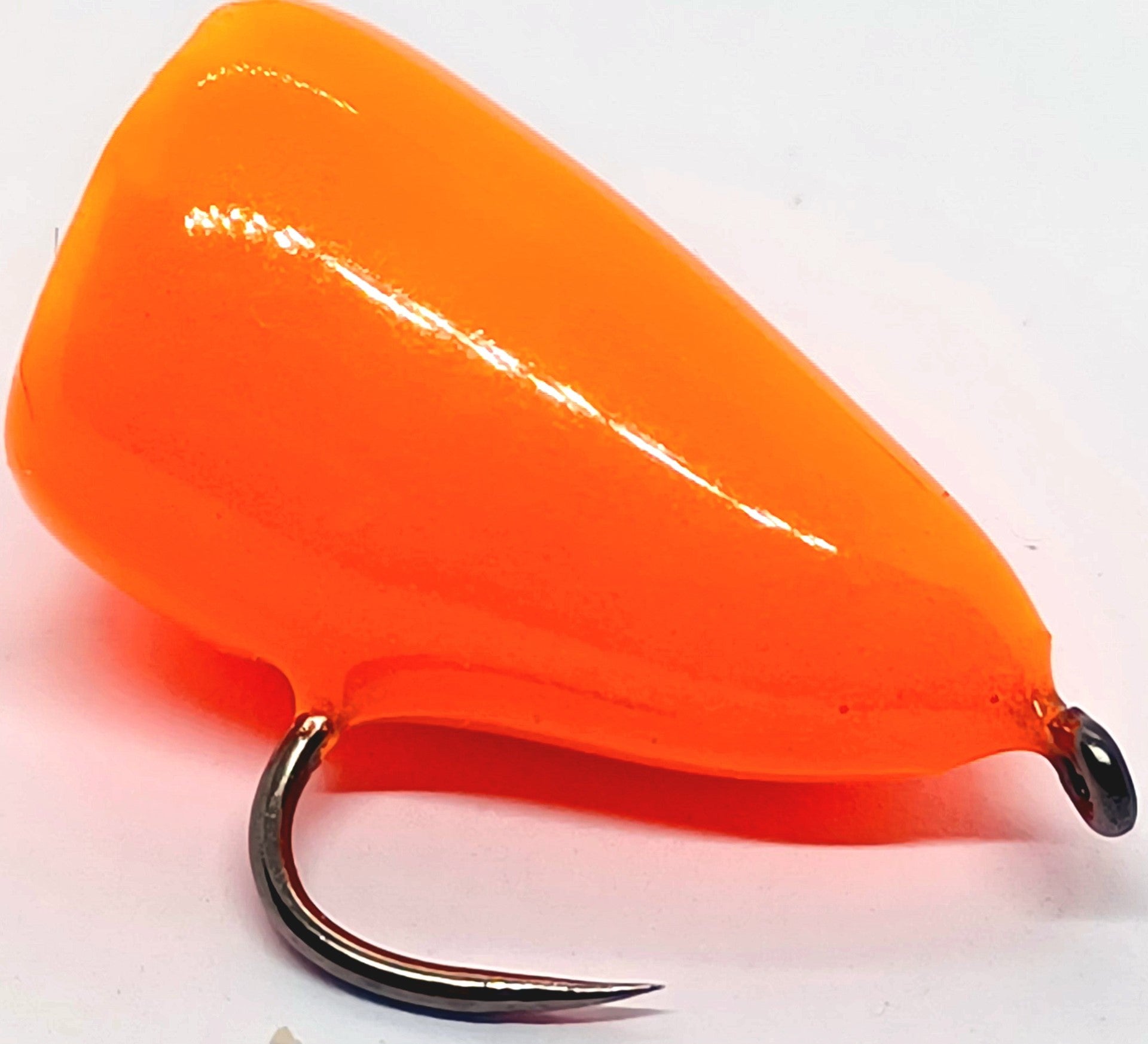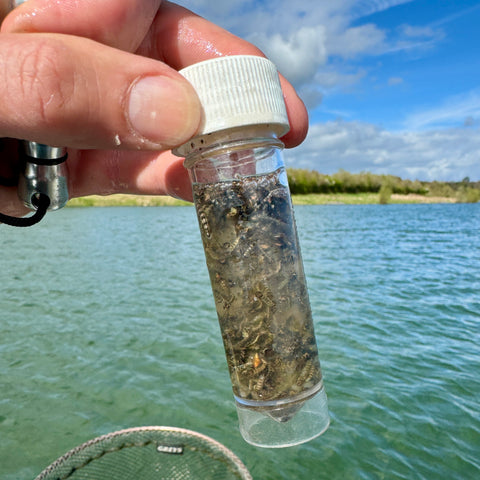
Fly Fishing Buzzers For Trout
During the months of March to June, the weather conditions are ideal for catching fish using nymphing tactics on small waters and reservoirs. Consistent hatches of Buzzers provide Trout with a rich source of protein and become their staple diet during this period. Some hatches can be so abundant that it's likened to a buffet for the fish. Making the most of this period is top of the agenda for most anglers, however, this is only possible if Buzzers are fished correctly. This blog will outline the best methods and tackle for effectively approaching Buzzer fishing, matching flies to the hatch and some tips to help you catch more fish.
Straight Lining
When it comes to fishing, depth is the most crucial, especially when you are fishing nymphs. It is essential to present your flies at the correct feeding depth as the fish could be feeding on them as the release from the lake bed, mid water in suspension or in the surface film where they are most vulnerable.
For a typical straight-lined Buzzer set-up, you can use either; a 3-fly cast on a floating line with 3 Buzzers spaced 5 feet apart or a 4-fly cast with 6 feet to the first fly and the others in 4-foot increments. This approach is ideal for covering multiple layers of the water column as the flies can drop through naturally. When fishing straight-lined Buzzers, it is best to cast at a 45 degree angle and let the flies drift naturally with the wind.

A deadly team of 4 buzzers from our previous Straight vs Curved Buzzers blog
The most effective way to fish Buzzers is static, with the occasional slow draw to bring them up through the layers before letting them drop again. Presenting your flies this way will achieve the natural rise and fall action of Buzzers as they ascend to the surface to hatch.
When fishing straight-lined Buzzers, it is recommended to use the heaviest fly on the point and an attractor on the top dropper (I like to use flies with hot spots or breathers). The heavy point Buzzer will help to set the cast and pull it to depth, while the attractor fly on the top dropper will draw fish to your cast. Unlike a Blob, for instance, the Buzzer is still a natural food source and less likely to spook wearier fish resulting in some better quality catches.

An example of an attractor Buzzer with a flashback and painted cheeks
Buzzer takes can be explosive, so it's advised to hold your rod tip around 2ft above the surface of the water. This will provide a buffer for the arm-wrenching buzzer takes. The loop of line between your rod tip and the surface of the water can also aid in take detection. If you notice any movement, just lift, you can learn more about bite indication from our Bite Indication Blog.
The Bung
The bung is a highly effective technique used to present your Buzzers at specific

depths, especially when the fish require a static presentation. When fishing using the bung, it is recommended to vary the depths until you find what works best. A good starting point is to use flies at 3ft, 6ft and 9ft depths. However, make sure not to have the point fly any deeper than 12ft, as it can be challenging to land the fish if it is any deeper. To fish using the bung technique, drop the flies by the side of the boat and count until the bung "sets." You can determine this as the bung will "dink" when the flies reach the desired depth. This way, you will know how long it takes for the flies to settle to depth, and if the bung "dinks" before this time when you are fishing, you know it is a fish taking on the drop.

The challenge of landing a fish that took a buzzer at 12ft under the bung
Whilst a controversial method, the bung can be devastating during a flat calm or in a wave, it really depends on how the fish want the flies presented. However, even when fished static a short twitch or figure of 8 can induce a take. Don't be shy and give it a go, what's to lose?
Washing Line
As previously mentioned, presenting your flies at the correct feeding depth is crucial for success. When fish are deep or spread out throughout the water column, a heavy-weight Buzzer on the point is an excellent way to locate them. On the other hand, when fish are found in the top few feet of the water column, changing the heavy point fly to a FAB, Booby, or foam dry fly is recommended -otherwise known as the washing line. When the fish are feeding high in the water column, using a buoyant point fly will slow the descent of the cast and keep them in the zone for as long as possible, giving fish ample time to find your flies.

A representation of a washing line setup.
The beauty of the washing line is it's versatility, changes to lines, tippets and flies can result in minor changes in presentation with major results. The sink rate of the washing line can be affected by multiple factors, including tippet material and flies. For example, if you want to keep your flies in the top couple of feet, use smaller Buzzers or Muskins tied on lightweight hooks with a FAB or Booby on the point and top dropper (or variations of). On the contrary, if you want to present your flies slightly deeper, use size 10 epoxy or glued Buzzers and a smaller buoyant fly like a foam Daddy to allow your cast to gradually cover the depths.

A FAB tied with Upavon Pure Blob Flame and HD Foam Cylinders
Leaders & Lines
Using specific tippet materials can make a significant difference to the presentation of the flies and depth. For fishing flies high in the surface layer a Co-Polymer line is preferred. Fine diameter and lower density than water, Co-Polymers will help the flies sink at a slower rate. Conversely, when fishing deeper or when bites are hard to come by, opt for a good quality Fluorocarbon, this material sinks faster but also has a refractive index similar to water so is less visible to fish. I prefer the Asso range of tippets in the 2x and 3X diameters, they are fine, supple yet robust and can effectively absorb those hard hitting Buzzer takes. Use discount code ASSOTEAM20 for 20% off your first Asso order here - you won't be disappointed!


Fly lines are the most useful tool to control depth, particularly when fishing from boats, but also from deeper banks too. Any serious bank angler should have at least 3 lines in his bag: floater, short sink tip and a longer sink tip. Why you may ask? Well the floater provides that high layer presentation, but will be very difficult to control or maintain presentation in a wave or windy conditions. The sink tips will dig in during these conditions, maintaining control but also allowing you to vary depth. I find that the Snowbee Buzzer Tip lines are perfectly designed for this application, supplying a 4ft and 10ft tips with a 1.5-2 inch per second sink rate - devastating!

Match The Hatch
Another key part to success can be (but not always) matching the hatch. Time spent picking emerging flies from the surface film to examine is never wasted, but consider that the emerged Midge fly will not be the same colour as the emerging pupa, so pick them before they start hatching from their shucks. Alternatively you can spoon a fish and examine the contents, I like to use a specimen bottle to help identify the contents in suspension. On certain days this can make all the difference, particularly if there is a certain colour dominant in the hatch, when the contents are less varied selecting something that looks a bit like everything can work well too.

A single sample from a Rainbow Trout caught from Pitsford Water in March
If you are as excited as we are for the Buzzer bonanza, why not check out our previous blog Straight vs Curved Buzzers
Thank you for reading!
Ben Beckwith
Comments
Leave a comment